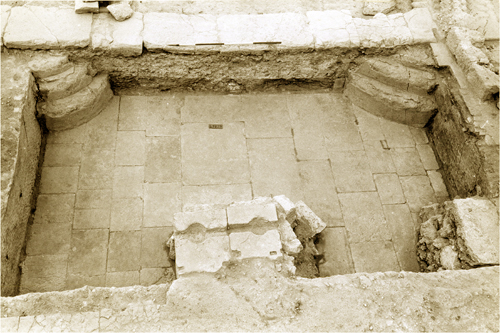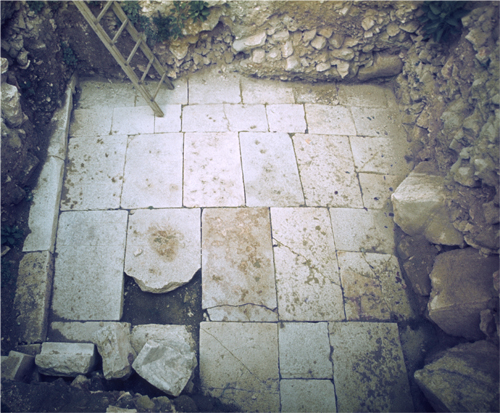In our previous post, we attempted to marshall the archaeological evidence that shows that Shimon Gibson’s suggestion that the Western Wall of the Temple Mount was destroyed by an earthquake in 363AD is incorrect. In response, one of our readers, Richard Stadler, asked the following questions:
I am trying to picture this in my mind’s eye. If the earthquake of 363 CE caused the huge stones to fall, and if the Roman bath house was constructed before 363, when you dug down through the layers to reach the Roman bath house, you would have found the bath house pulverized by the stones, right? Did you find the stones we see today on the Roman street next to the Western Wall, UNDERNEATH the bathhouse when you removed the bath house? If so, it appears that they had to have fallen before the bath house was built over them, right? Is there a picture record of the excavations which uncovered the bath house and is it definitively dated to construction before the earthquake that Gibson is suggesting caused these stones to end up where they were found by archeologists digging down through the layers?
The bath house mentioned dates from the Roman period, as the many 10th Legion stamped bricks used in the construction of the hypocaust indicate (see: Eilat Mazar, The Complete Guide to the Temple Mount Excavations, pp. 72,73). Below is a picture of the cold water pool (frigidarium) of the Roman bath house in the Temple Mount excavations:

As can be seen, the paving of the pool was found intact, together with two sets of curved steps leading down to the bath (upper left and right). In the foreground are two piles of stones, built into the bath at a later period. These served as the foundations for two column bases of an Umayyad building.
Thus, the archaeological evidence proves that this bath, which was located only 8 meters from the Western Wall, was not destroyed by the earthquake of 363AD. The bath, in fact, was not destroyed at all, just covered over in the later Umayyad period.
When, in the process of excavation, this bath was removed, the Herodian street was found about 3 meters lower down:

On the right of the photo, the western edge of the stone pile visible in the excavations today can be seen. Compare with the photo below:

The archaeological record described above makes it abundantly clear that the upper part of the Western Wall was not destroyed by the earthquake of 363 AD, but long before that, namely in 70AD, as the coins found below the Herodian destruction stones on this street also testify.
